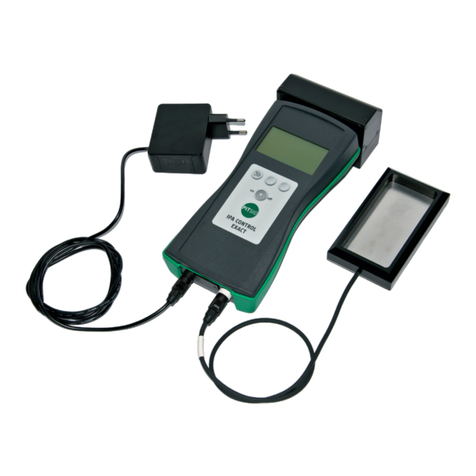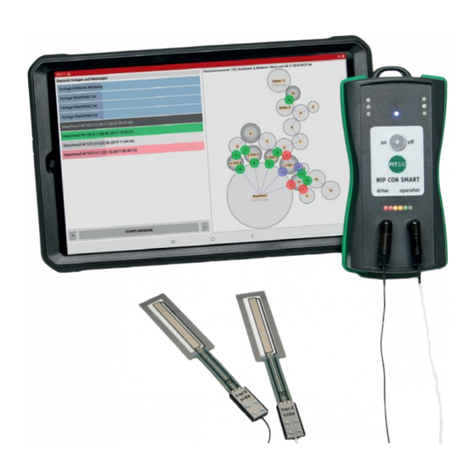
DOC_NIP_CON_SMART_compact_EN_20230102 DOC_NIP_CON_SMART_compact_EN_20230102
EN
EN
Intended Use and Restrictions on Use
What is nip width?
In order to transfer ink and fountain solution evenly and in sucient quantities
onto the medium to be printed, pressure between the hard / soft rollers pairs
involved is required. A measure of the pressure is the width of the contact zone or
the contact strip width (NIP width).
The Contact Zone Measuring System NIP CON SMART compact was developed for deter-
mining the NIP width in printing presses. It is used for setting and checking the
inking and dampening unit hard / soft paired rollers.
The diameter of the soft roller can have values between up to 300
mm. The diameter of the hard roller can be any size. It can be used
for a rubber hardness of 20 - 60 Shore A with rubber blanket thick-
nesses of 5 - 20 mm.
The intended use of the measuring system also includes the use of the sensors
supplied by PITSID. The hand-held device is neither water nor dustproof and is
therefore only suitable for use in dry interiors.
IMPORTANT If the application limits of the device are exceeded, sensor failures
and markings on cylinder surfaces can result.
Safety Instructions
The safety instructions will be supplemented with additional safety information
throughout the text.
Attention
Deviating usage from the intended application can cause property
damage and personal injury.
Attention
Failure to follow these operating instructions can result in property
damage and personal injury.
Attention
Improperly opening individual system components can lead to
property damage and personal injury.
Attention
If safe operation of the device is not possible, the measuring system
must be taken out of operation or not started up. If necessary, secure
the device against unintentional start-up.
Attention
A lithium-ion battery is built into the device. The guidelines for
handling lithium-ion batteries apply..
IMPORTANT The device belongs to protection class II.
The device has degree of protection IP 20.
Technical Data
Measurement range 0 …35 mm
Resolution 0.1 mm
Scope of application Roller pairing hard/soft
Roller diameter hard: Any size
Roller diameter soft: ≤ 300 mm
Rubber hardness: 20 Shore A ... 60 Shore A
Rubber thickness: 5mm … 20mm
Environmental conditions Temperature: 15°C … 30°C
Storage Temperature: -20°C … 30 °C
Dimensions
(length x width x height)
Hand-held device: 150 mm x 80 mm x 60 mm
Sensor: 140 mm x 22 mm x 3 mm
Protection class IP 20
Weight Total: 1175g
Sensor cable length 1.7m
Power supply
hand-held device
max. 5.0V DC
(Lithium-ion/Polymer 1 cell battery: 3.7 V / 1260 mAh)
Power consumption
hand-held device
max. 300mA
Automatic shutdown After 5 min of operation
System requirements
operating system
Smartphone: starting from Android 7.0 („Nougat“)
PC: starting from Windows 7
Scope of delivery Hand-held device with integrated smartphone (6.6”)
and protective case, two sensors, USB cable, carrying
case, operation manual, installation software





























